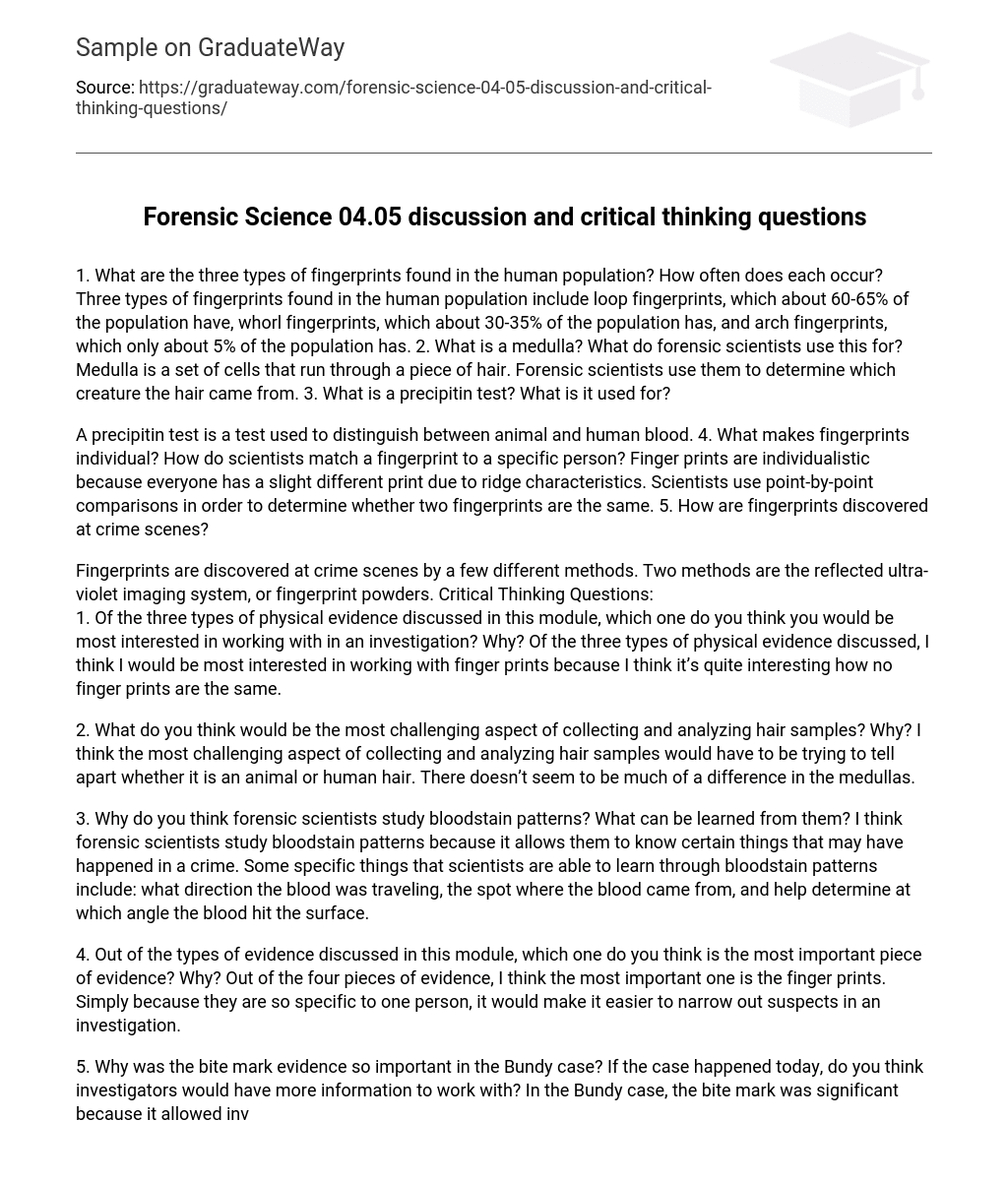1. What are the three types of fingerprints found in the human population? How often does each occur? Three types of fingerprints found in the human population include loop fingerprints, which about 60-65% of the population have, whorl fingerprints, which about 30-35% of the population has, and arch fingerprints, which only about 5% of the population has. 2. What is a medulla? What do forensic scientists use this for? Medulla is a set of cells that run through a piece of hair. Forensic scientists use them to determine which creature the hair came from. 3. What is a precipitin test? What is it used for?
A precipitin test is a test used to distinguish between animal and human blood. 4. What makes fingerprints individual? How do scientists match a fingerprint to a specific person? Finger prints are individualistic because everyone has a slight different print due to ridge characteristics. Scientists use point-by-point comparisons in order to determine whether two fingerprints are the same. 5. How are fingerprints discovered at crime scenes?
Fingerprints are discovered at crime scenes by a few different methods. Two methods are the reflected ultra-violet imaging system, or fingerprint powders. Critical Thinking Questions:
1. Of the three types of physical evidence discussed in this module, which one do you think you would be most interested in working with in an investigation? Why? Of the three types of physical evidence discussed, I think I would be most interested in working with finger prints because I think it’s quite interesting how no finger prints are the same.
2. What do you think would be the most challenging aspect of collecting and analyzing hair samples? Why? I think the most challenging aspect of collecting and analyzing hair samples would have to be trying to tell apart whether it is an animal or human hair. There doesn’t seem to be much of a difference in the medullas.
3. Why do you think forensic scientists study bloodstain patterns? What can be learned from them? I think forensic scientists study bloodstain patterns because it allows them to know certain things that may have happened in a crime. Some specific things that scientists are able to learn through bloodstain patterns include: what direction the blood was traveling, the spot where the blood came from, and help determine at which angle the blood hit the surface.
4. Out of the types of evidence discussed in this module, which one do you think is the most important piece of evidence? Why? Out of the four pieces of evidence, I think the most important one is the finger prints. Simply because they are so specific to one person, it would make it easier to narrow out suspects in an investigation.
5. Why was the bite mark evidence so important in the Bundy case? If the case happened today, do you think investigators would have more information to work with? In the Bundy case, the bite mark was significant because it allowed investigators to convict Bundy of the murder. Without this helpful piece of information, Bundy may have not been convicted. I think If this case was to happen today, investigators would be able to have even more information to work with because of the constantly advancing technology.





